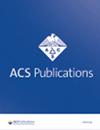Chemical and Morphological Analysis of Calcium Oxide (CaO) Powder from Sea Urchin (Diadema setosum) Shell
引用次数: 0
Abstract
Calcium carbonate (CaCO3) has been taken from sea urchin (Diadema setosum) shell and calcinated at several temperatures to obtain calcium oxide (CaO). X-Ray Fluorescence Spectroscopy (XRF) revealed that the powder from this shell had a high Ca level, which increased at a higher temperature. Fourier Transform Infrared Spectroscopy (FTIR) spectra agreed to an increase in Ca level that showed the presence of CaO at 900 °C and 1100 °C; otherwise, CaCO3 disappeared. Using Scanning Electron Microscopy (SEM), the powder morphology was more homogeneous at 900 °C and 1100 °C than at lower temperatures. This morphology was encouraged by decreasing particle size, indicating compound decomposition in the powder and Ca leaved. This decomposition was confirmed by an Energy Dispersive X-ray Spectroscopy (EDS) analysis that showed increased Ca content with higher mass and atomic level at a higher temperature.海胆(Diadema setosum)壳中氧化钙(CaO)粉末的化学和形态分析
从海胆(Diadema setosum)壳中提取碳酸钙(CaCO3),在不同温度下煅烧得到氧化钙(CaO)。x射线荧光光谱(XRF)表明,该壳粉末具有较高的钙含量,温度越高钙含量越高。傅里叶变换红外光谱(FTIR)表明,在900°C和1100°C时,CaO含量增加;否则,CaCO3消失。通过扫描电镜(SEM)观察,粉末形貌在900℃和1100℃时比在较低温度下更为均匀。颗粒尺寸的减小促进了这种形态,表明粉末和钙叶中的化合物分解。能量色散x射线光谱(EDS)分析证实了这种分解,表明在较高的温度下,随着质量和原子水平的增加,Ca含量增加。
本文章由计算机程序翻译,如有差异,请以英文原文为准。
求助全文
约1分钟内获得全文
求助全文

 求助内容:
求助内容: 应助结果提醒方式:
应助结果提醒方式:


